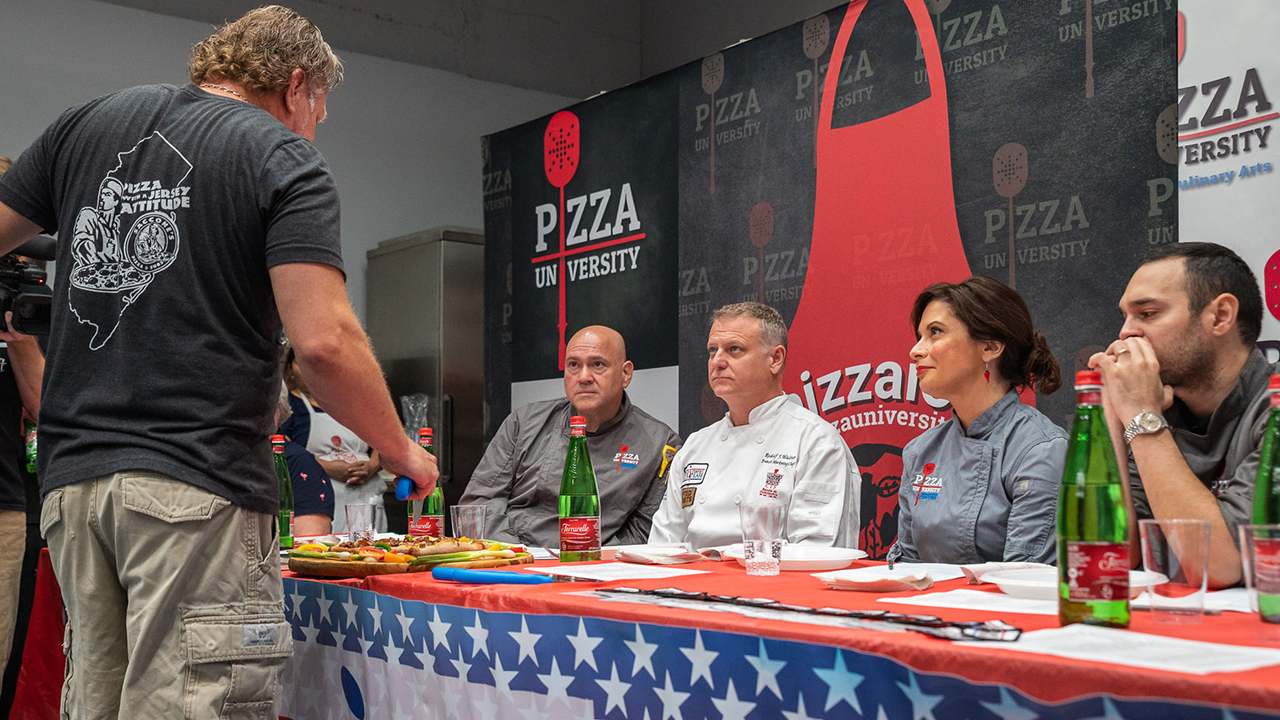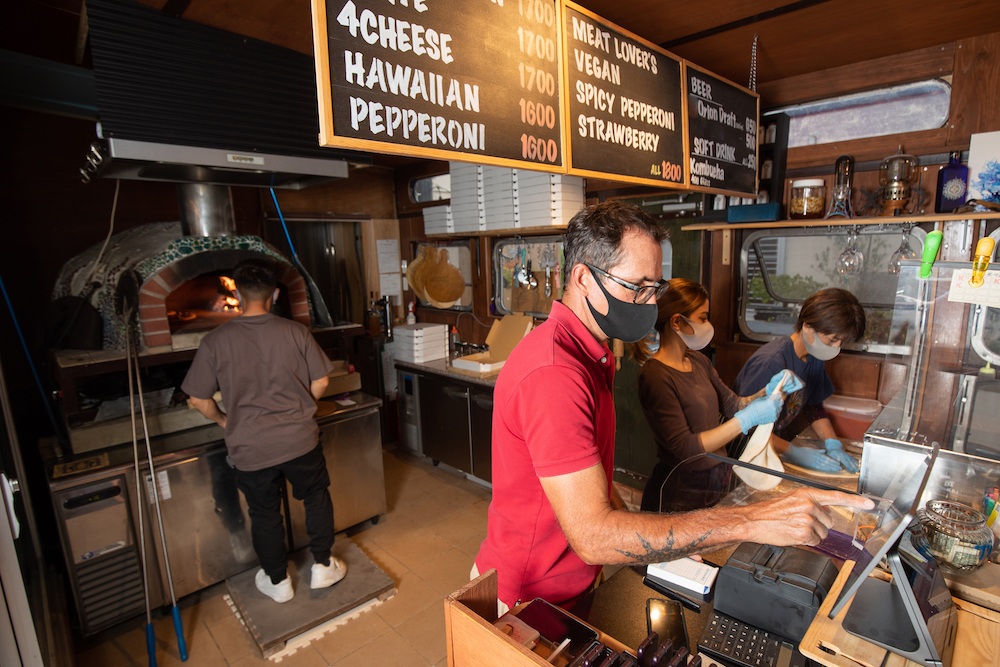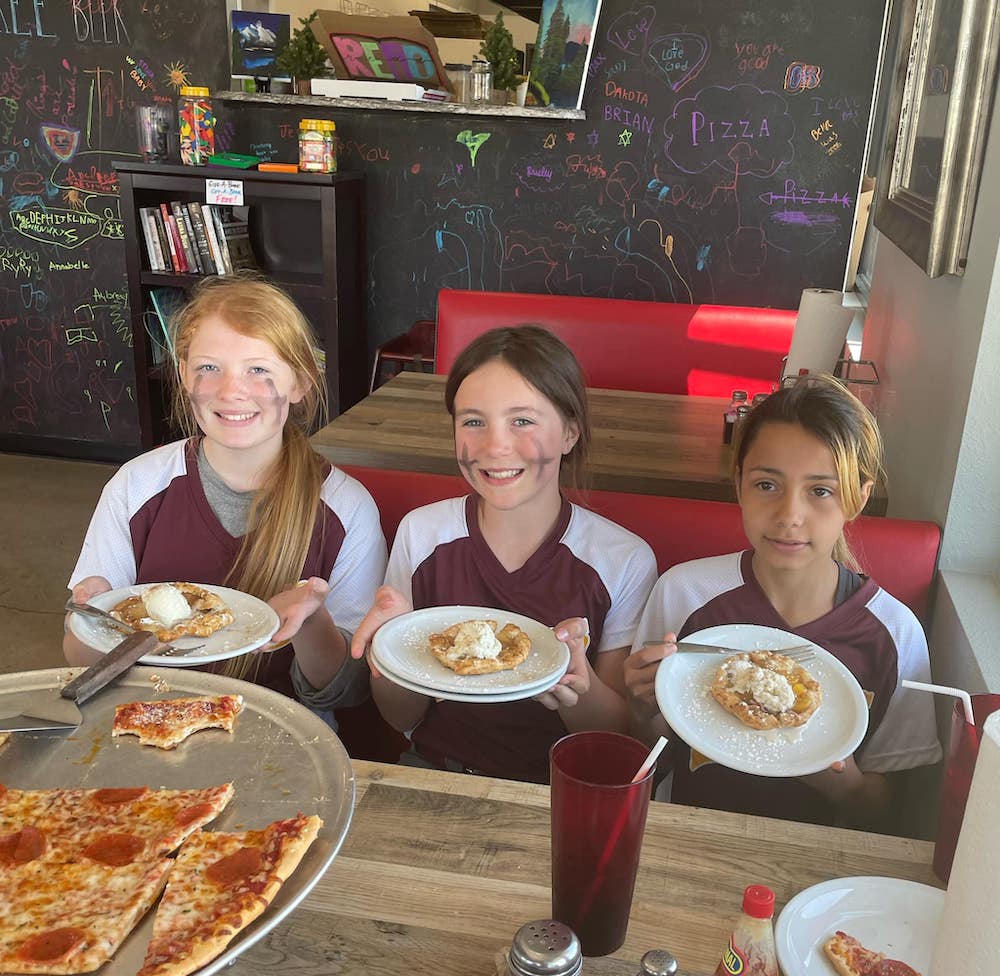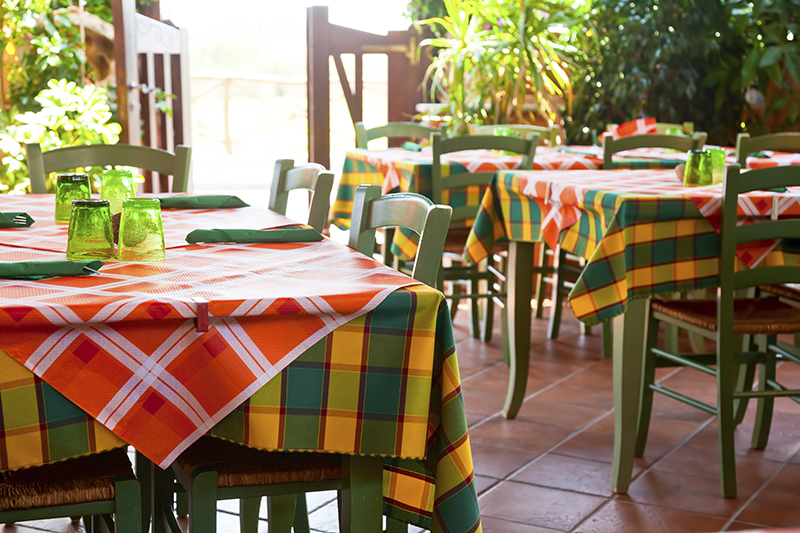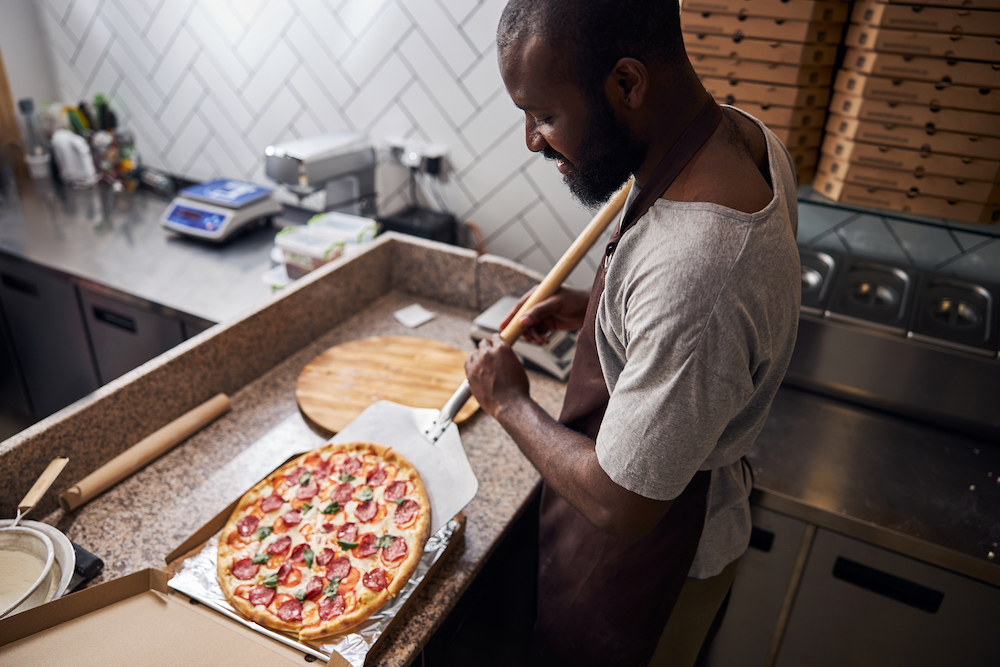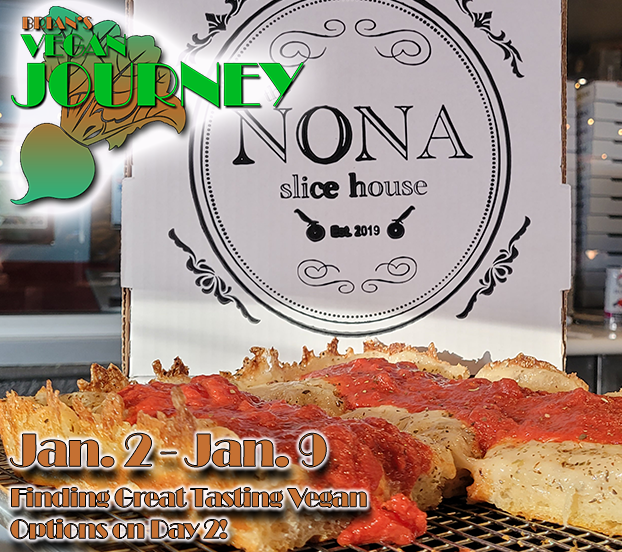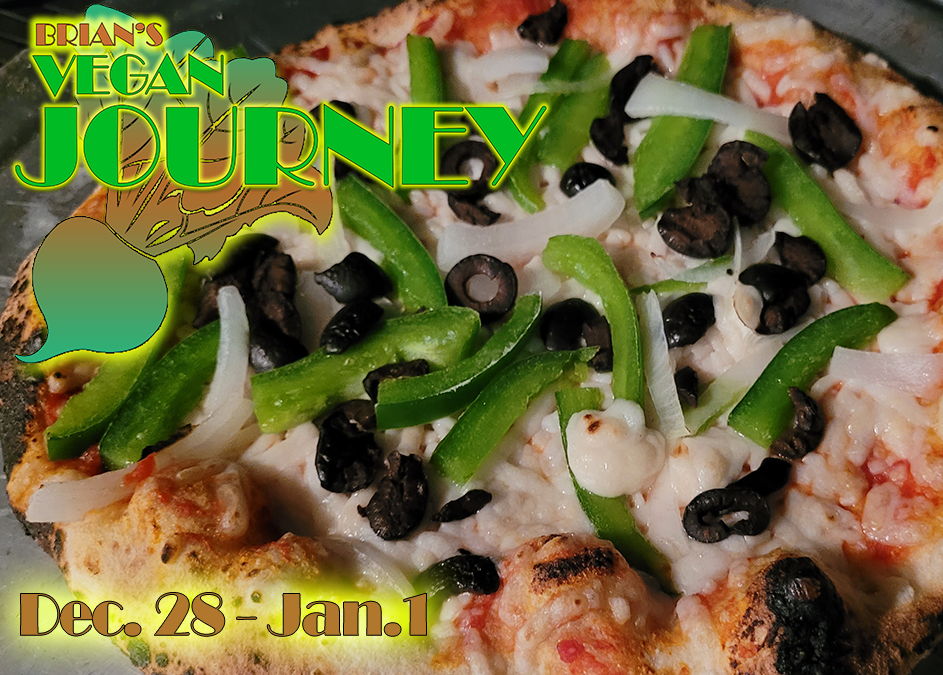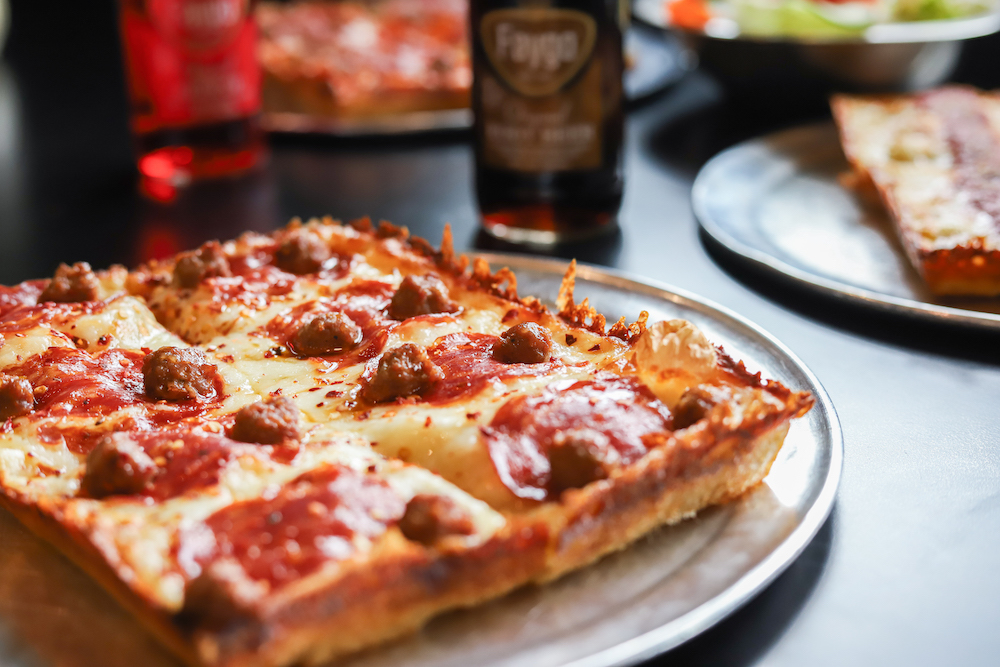- Rudy Waldner, an author, U.S. Pizza Team member and professor, knows what it takes to make your pie stand out in a pizza making competition.
- “You want every single ingredient to shine through on their own,” Waldner advises. “You should be able to discern each individual flavor.”
Editor’s note: This article contains additional material, including tips for judging pizza competitions, that was not included in the November 2021 print version.
By Brian Hernandez
It is said that Lady Justice is blind—her scales swayed only by the evidence at hand, her sword at the ready. But what if she judged by smell and taste? Suddenly her “objective” scales could be weighted in one direction or the other, and her whetted rapier just might serve up slices instead of sentences.
Luckily, most of us don’t have to face that kind of judgment—except for pizzaioli, for whom it’s a daily occurrence. Sometimes they even voluntarily place themselves at the mercy of the toughest magistrates of all—their fellow pizza makers—in regional, national or international pizza making competitions. With in-person competitions springing back up around the world, now is the time to make sure you know what judges look for in a perfect pie and how to prepare for different events in different regions.
Rudy Waldner—an author, professor of marketing and dining etiquette in Costa Rica, vintner and U.S. Pizza Team member—is no stranger to sitting in judgment of others’ culinary gifts. With visits to more than 10,000 restaurants and 2,000 bottles of wine in more than 80 countries under his belt (literally), Waldner has judged competitions from wine to wings and from barbecue to pizza. He knows what it takes to make your dish stand out from the competition and tip the scales in your favor. Court is now in session, the Honorable Rudolf J. Waldner presiding!
PMQ: What should competitors think about when creating a competition pie? Regions? Local ingredients? Hometown tastes?
Waldner: I’ve watched as everything you mentioned has both won and lost a competition. I’ve seen a terrific pie from a Texas based entrant that offered a delicious, shredded BBQ style pizza. It didn’t fly with the judges, most of whom hailed from Italy and were looking for more of a traditional pizza. Flavor and ingredients are huge, but the audience must always be considered. A white clam pizza will likely not win in Arkansas.
PMQ: What do judges look for besides an edible slice? Exotic ingredients or just the basics?
Waldner: Both. But if you’re using exotic ingredients, you absolutely need to know your audience. Do your research on local and seasonal toppings from the area where you’re competing. Some judges may look for something out of the box, but a majority will have a certain regional palate, and they tend to judge based on that. Always remember too, less is more. You want every single ingredient to shine through on their own. You should be able to discern each individual flavor.
PMQ: What are some of the best tips you as a judge can give competitors?
Waldner: Know everything about your pie. There are two styles of judging, blind judging and open judging where the competitor presents the pizza directly to the judges. When it is open judging, typically the judges are allowed to ask questions of the competitor. You better know all your times and temperatures in dough production, as well as ingredients and weights. It’s good to know at least one unique fact about all the ingredients on your pie. And, especially in Italy, the judges will grill you about your dough production process. Choose slices that have great crumb structure and evenly distributed toppings. Some people like to have all the flavors in a single bite. That becomes a balancing act since you could end up with a wall of flavor that’s hard to judge. Others try to have only one or two ingredients in one bite, so each bite is different, and each ingredient is pronounced. This is also risky as judges typically don’t take that many bites. You run the risk of them not getting all the intended flavors before they move on to the next pie. Whichever way you present it, make sure it is the best representation of your flavors in as few bites as possible. And smile! If you don’t have fun, it will be reflected in your final product. After all, its pizza, it’s meant to be fun.
PMQ: How do you judge that first pizza? Should you strategically judge it a little lower to leave room for better pizzas, or score “as is” without regard for the upcoming entrants?
Waldner: I score “as is” and then use decimals, if permitted. I want to show respect to the participants for their efforts, so something really must have gone wrong to get much lower than a seven out of ten from me. Decimals allow for a little nuance between scores, especially if the competition is close, but seven is a good starting point. This leaves you room above and below to rate better or worse entrants.
PMQ: Would you advise changing scores (if allowed) according to the quality of entries after the first few pizzas, once you have a good baseline?
Waldner: I’ve thought about this often. As a BBQ and baking judge, changing scores is not allowed, and I tend to agree. It’s a slippery slope that can lead to a lot of confusion on your part as to which entrant you need to raise or lower. Judge from your heart using the judging criteria and be confident in your scoring. It is better for you to give the same or similar scores to a couple of entrants than to try to go back and possibly accidentally change someone’s score for the worse.
PMQ: What are the best ways for a judge to taste an entry?
Waldner: Optimally, two bites. The crust and a random bite. Inevitably there’ll be a few entries that you’ll not be able to resist finishing, but that’s why I always wear stretchy pants for these events.
PMQ: Should judges take notes and pictures for all the entries, so they have a full comparison for reference throughout the event?
Waldner: I always take notes for myself, but also leave comments when allowed on the score card, as participants usually crave input. Rightfully so. I do try to take photos as time permits, but some pies with toppings such as Maine lobster, filet mignon and edible gold flakes need to be captured on film.
PMQ: What happens if/when palate fatigue sets in?
Waldner: Prosecco, as a rule. Apples are good as well. So is chewing on a lemon rind between slices or sparkling water. I’ve also heard recently that fruit sorbets are gaining traction as palate cleansers. Takes all kinds, I guess.
PMQ: How should you judge certain items such as crust, cheese or sauce?
Waldner: First, enjoy, but pace yourselves. Seriously. It’s a long day. Breathe, walk a bit between servings if possible. The crust should crunch, the cheese should be melted adequately, the sauce is a personal taste preference so the more you try different pizzas before a competition, the more trained your palate becomes.
PMQ: Do you prefer open or blind judging? What about either do you like/dislike?
Waldner: Blind judging would seem to be the fairest. But platform skills & presentation are a big part of open judging and rightfully so. Behind your counter in your shop, you are on stage. You’ve got to get good at exuding enthusiasm and knowledge of your product. It’ll grow your business and help make your customers your evangelists.
PMQ: In an open-judging event, where you present directly to the judges, what do you expect to hear or see from a competitor?
Waldner: I believe, just like an exceptional wine, the story is extremely significant. Let us know of the origins of the ingredients, the inspiration for the recipe. It should be told with enthusiasm, perhaps even revealing a “secret” ingredient or process. Also, take pride in your presentation and appearance. Most competitions will not judge you on the presentation, but if allowed in your event, it goes a long way subliminally. When the judges see a lavish display platter and a beautiful pizza, they get the sense of the love and care you have for that product. They feel your pride. And I’m sure it does sway a half a point or two from certain judges. Appearance. Dress to impress. This will set you apart from other entrants. No shorts or t-shirts. Wear a chef coat with chef pants. Have a towel or apron to keep yourself clean until presenting to the judges. In competitions like the World Pizza Championships in Parma, Italy, they have oven judges. They judge you on your prowess in making the pizza. They have points for cleanliness, skill and proficiency with your dough, peels and the ovens. They will mark you down for wearing shorts, watches and even wedding rings. Most competitions are not that strict, but you should go into every event thinking it will be.
PMQ: Any tips regarding judging for someone looking to host their own pizza competition?
Waldner: For scoring, I’d add a fraction of a point to the first and last participant’s score. Typically, the first pie does not get scored as well since there is nothing to compare it to, and by the time the last competitor comes around the judges are stuffed. It’s common practice nowadays for the first competitor to be gifted a few extra points if they volunteer to go first. I’d have a participant certificate for all the competitors that presented a pizza for them to hang in their pizzerias, regardless of how they placed. I’d also have a certificate for the judges. I received a nice plaque for judging up in NYC that’s still hanging on my wall. I would also strongly suggest the judging criteria, “would you order this pizza?” Commercial viability is huge stateside.
PMQ: What are your thoughts on the virtual models for competitions that have come about recently? (i.e., Real California Pizza Competition, Virtual U.S. Pizza Cup, Virtual Acrobatics Pizza Spinning Challenge?)
Waldner: For pizza acrobatics it makes a lot of sense. That’s a highly visual competition so it’s a comfortable fit, though live is still much more fun. For the virtual culinary competitions, it can and should serve as a learning experience as well as a competition. For example, in the 2020 Virtual U.S Pizza Cup, the photo experts blended with the culinary side of the business to get fair and concise results. I think that everyone learned a bit about lighting, placement, and themes. It reinforced the importance great food photography as well as solid recipes that have natural eye appeal. That knowledge and experience is invaluable as you’re advertising your brands online and elsewhere.
PMQ: What is the future of in-person competitions, in your opinion? Are they still necessary/desired after the advent of virtual competitions?
Waldner: Nothing comes close to a live event. Nothing. The energy, taste (obviously), knowledge sharing, experience, and camaraderie can’t be duplicated over Zoom. Sorry Zoom, it just can’t.
PMQ: What would you suggest that could help make the virtual model better?
Waldner: In addition to submitting photos, a video clip would be useful. A virtual presentation of the pie where the participants pull the pizza out of the oven and cut it and hold up the slice to the camera.
PMQ: Any final “best tips” for judges and competitors alike?
Waldner: For judges I would say be constructive to help improve or support the participant’s entry rather than giving a low score without offering a chance for learning. Leave that comment on the scorecard telling them why they got a low mark. They want that info so they can do better next time. If you’re hosting the event, make sure your competitors get the number scores as soon as possible, preferably directly after the event. Have someone tabulating the scores as you go so you are ready when the final pie is finished being scored. Also make sure the competitors get physical scorecards with judge’s comments so they can improve for the next time. That is one of the most valuable things to come out of competition. The constructive criticism from the judges. For competitors – practice, practice, practice. Don’t just practice making your “pride and joy” but presenting it as well. Write down the words that you want the judges to hear and practice your lines until you can say them in your sleep. I can’t tell you how many times a few points were left out in the presentation that could have made a significant difference in the final scoring depending on the judge.



